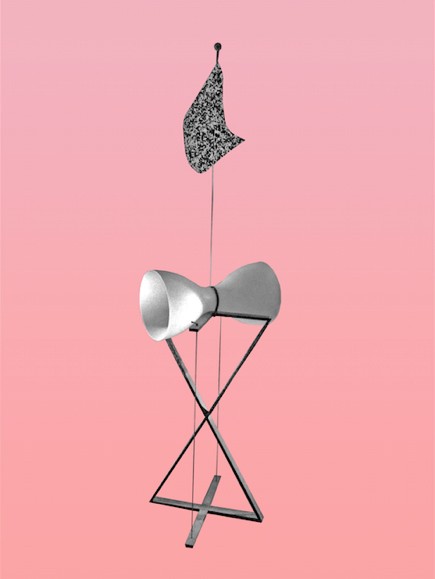LOOK AT
THE SOUND
Thesis
by Ieva Valule2014
8 Which means can be chosen in order to create meaningful and yet emotional audio visualizations?
First of all I would like to conclude the context of the meaningful audio visualization. After my research I could conclude that meaningful audio visualizations are significant and relevant to the concept of the musical piece. Effect of visualizations should be more than just an additional service to the music. This idea triggers a thought that not always music can be accompanied with visuals, and not all music or sound needs to be visualized. The sound and the image have to be created as one.
The process of aesthetic choices has to be consequential and purposeful in order to benefit greater satisfaction and meaningfulness of the perceived art. Analyzing audio composition is a vital first step in order to make sure that the following work is relevant. The end result is not only a matter or visual artist’s creativeness and its abilities to reflect sound into image — it is also the responsibility of the person who performs the piece. This person must be ready to synchronously develop a concept and create an atmosphere.
The process of aesthetic choices has to be consequential and purposeful in order to benefit greater satisfaction and meaningfulness of the perceived art. Analyzing audio composition is a vital first step in order to make sure that the following work is relevant. The end result is not only a matter or visual artist’s creativeness and its abilities to reflect sound into image — it is also the responsibility of the person who performs the piece. This person must be ready to synchronously develop a concept and create an atmosphere.
Motion probably is one of the most effective ways to gain the attention to the visual material. Moving objects pinches the attention of the eyes to the artwork. A rapid change in motion is an effective way to gain attention to visual elements. When those rapid changes are controlled by expected narrative the attraction of attention is not as strong if they are more erratic and alarming, but still synchronized with the music.
Another way how to trigger the listener is to distort the look of the habitual devices. As in one of my experiments I transformed ordinary speakers in to agent of attraction (Figure 38). Particularly, if we talk about an electronic music performance, we expect to see great amount of blocky speakers in all sizes. But we do not expect devices that that could tell a story by its appearance.
After my explorations trough out the narrative of the audiovisual arts I have not found one single-minded or exceptional method to be used in order to create organic synthesis between the sound and image. It seems to depend more on the situation, musical piece specifics and budget of the project. As expected I did analyze the pros and cons of each method, but still I think this methodological approach should be fitted individually for each situation. But some particular ideas really inspired and transformed my orientation towards meaningful and emotional visualization.
I am deeply charmed by Le Corbusier description of the atmosphere of – “Poème électronique”. This event by his words should be held in a ‘bottle’ that contains the ‘nectar of spectacle and music’.
After my explorations trough out the narrative of the audiovisual arts I have not found one single-minded or exceptional method to be used in order to create organic synthesis between the sound and image. It seems to depend more on the situation, musical piece specifics and budget of the project. As expected I did analyze the pros and cons of each method, but still I think this methodological approach should be fitted individually for each situation. But some particular ideas really inspired and transformed my orientation towards meaningful and emotional visualization.
I am deeply charmed by Le Corbusier description of the atmosphere of – “Poème électronique”. This event by his words should be held in a ‘bottle’ that contains the ‘nectar of spectacle and music’.
Nevertheless really unexpected methods and instruments were discovered during my research. Particularly those that were invented by the time when there were no electricity or computers with big processing capacity. In nowadays concerts are nearly unthinkable without electricity or computer potential. Sadly most of the methods from pre-electricity generation never gained appreciation or recognition; on the other hand they still remain as unusual solitary concepts.
Genuinely the abstract video art comes the closest to traditional music composing process. Abstract video incorporates measures of emotional and rational approach. Abstractions can consist of unreal representations that are implemented in themes and narratives. Some visual artists are free to improvise, but some work with their visuals systematically, for example by using formulas and mathematical equations. Most of the music authors will prefer one or the other method to create music. In essence music and abstract art has the same production origins.
Many artists have used sound in their works, often taking advantage of its special properties or synesthetic experiences. The sound visualizations and installations are a well-established solitary art form. Yet the auditory experiences are still a generally unexplored topic.

Figure 38. Ieva Valule – Pollutor. 2014